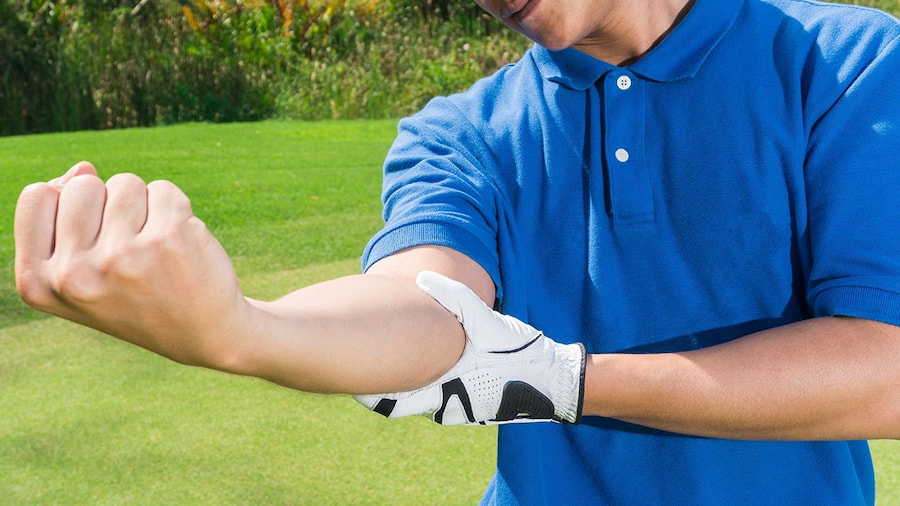Tennis elbow, also known as lateral epicondylitis, involves a kind of elbow a condition called tend or inflammatory of the ligaments. Range of motion can be severely restricted by tennis elbow. Racquet players, who constantly perform the same motion a second time, are particularly prone to developing elbow problems due to overuse.
Your standard of life may be affected by tennis elbows; Penn orthopaedic physicians and specialists may be able to assist. For the management of tennis elbow, we use the most recent nonsurgical and surgical methods. People in their 30s to 60s are susceptible to tennis elbow, which is characterized by pain in the outside area of the shoulder. For most people, alleviation can be obtained without treatment.
A customized arrangement of medical treatments, depending on the individual’s particular demands along with the degree of severity, is frequently the best treatment for tennis elbow. Such treatments might consist of physical education, rest, PRP administering medications, or shockwave treatments.
Tennis Elbow Medical Care
Conventional Therapy for Lateral Tendon?
- The injured tissue can heal with rest as well as anti-inflammatory properties treatments (ice, ultrasound imaging, and massage).
- Extend your forearm muscles.
- Strengthen the extremities of the ECRB muscles irregularly; this is said to lengthen the connective tissue and muscle as they mend.
- To safeguard the tendon from damage while you resume activities and continue strengthening it, wear a game of tennis elbow brace.
The ECRB tendon typically heals in six weeks, and the muscles require an additional six weeks to fully develop. These conventional treatments might work, but experts discovered two undiagnosed reasons for mechanical pressure on the lateral shoulder that could impede a full recovery.
Rehabilitation for Tennis Elbow
The most beneficial approach to treating elbow tennis syndrome is rest. If it is possible to cease the unrelenting movement the fact that created it, it frequently resolves on its own.
Other conservative methods for managing tennis elbow include:
- Ice: To lessen discomfort and expand, experts advise applying ice for fifteen minutes every three to four hours.
- Mulligan mobilization with movement and taping: a type of therapeutic exercise that involves movement and taping, realigns the muscular system to prevent future tension on the affected tendons.
- Physical therapy: A trained specialist can demonstrate movements that will help you stretch including strengthening the tendons and muscles in your forearms, upper arms, and shoulders.
- Steroids: Giving yourself a shot through the forearm ligaments may momentarily reduce the inflammation and pain surrounding your elbow joint.
- According to studies, persistent elbow pain caused by tennis can be treated with Botox injections.
- Needle fenestration: This technique increases blood circulation and speeds up healing by continuously inserting a small instrument into the wounded tendon with the use of a specialized ultrasound.
Refusing or Altering Activities
Movements that put stress on the afflicted muscles and ligaments should be avoided if you are suffering from the condition known as tennis elbow. It could be necessary for you to refrain from performing manual labour with your forearms during employment, such as transferring weight, until your arm pain subsides. Speak with your supervisor about modifying or avoiding any activities that can aggravate the injured arm and exacerbate the discomfort.
Platelet-Rich Plasma (PRP) Chemotherapy:
In PRP medical treatment, the blood of the individual is drawn, the platelets that are present are concentrated, and the region that has been impacted is injected with the plasma that contains platelets. Growth-promoting substances included in platelets can promote the regeneration of tissues and repair. According to studies, injections of platelet-rich plasma (PRP) may help individuals with tennis discomfort in the elbow and encourage tendon recovery.
Tenex method (Tenotomy with Ultrasound):
The Tenex method makes use of ultrasonography technology to locate and eliminate tendon injury. A very small cut is made using a method that is minimally invasive to introduce ultrasonic technology, which dissolves and eliminates the tissue that has been wounded to promote faster healing and less discomfort.
Extracorporeal Shockwave Therapy (ESWT):
This treatment uses vibrations to treat the injured area to reduce inflammation and encourage tissue healing. Through the stimulation of the body’s innate healing manipulation, this non-intrusive therapy approach has demonstrated encouraging outcomes in the management of tennis elbow.
Regenerative medicine (Stem Cell Therapy):
To heal and rebuild wounded tissues, stem cells are injected into the region that has been harmed. Although additional investigation is needed, this novel strategy may help people with tennis elbow successfully recover their damaged tissue.

Laser treatment:
To promote tissue healing, lessen inflammation, and ease pain, low-level laser treatment, or LLLT, uses particular light wavelengths. Exercises of laser treatments are non-intrusive and may be a useful addition to rehabilitation for elbow pain caused by tennis.
Customized Biomechanical Evaluations and Braces:
Thanks to technological developments, comprehensive biomechanical evaluations are now possible, enabling the creation of supports or braces that are intended to reduce strain on the injured hamstrings. These braces can help lessen strain when engaging in activities that could make warning signs of tennis elbow worse.
Final Words
The development of novel technologies for medicine along with treatment approaches have resulted in a major evolution in the management of tennis elbow in recent times. Even if time-tested techniques like orthodontic devices, physical activity, along rest still work, new developments provide more choices for those looking for more effective management of pain as well as a quicker recovery.
Also, read this: Lower Back Pain: Causes, Diagnosis and Treatment
I’m Lilly Crawford, a skilled business expert who’s great at making successful plans. I’ve learned a lot from working at Arrow Redstar and Hi Property in the UK, gaining loads of knowledge about sales and how businesses work. I also write helpful articles about business strategies, using what I know to explain things well. I studied Business Studies in college and love sharing useful ideas to help businesses grow.